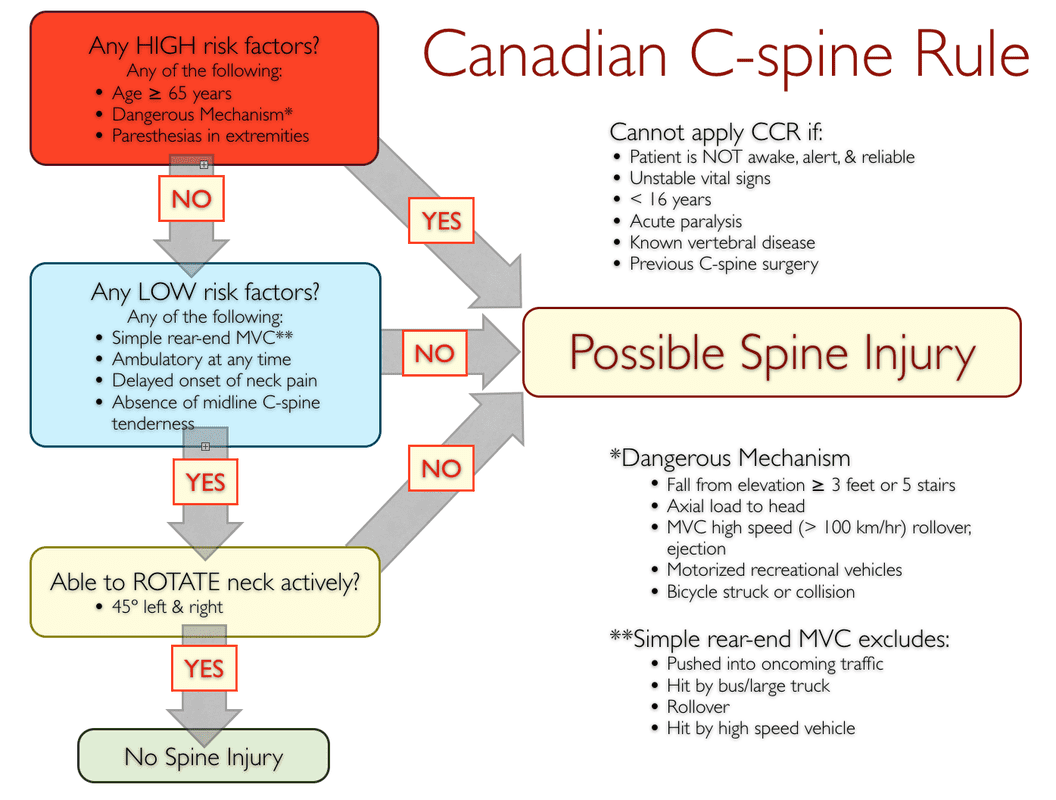The Journal of Wilderness and Environmental Medicine (WEMJ 2019; 30(4): 412e6) has a study on improvised cervical collars that was conducted by a group at the University of Utah. They used a model soft improvised C-Collar of a rolled up fleece, similar to a common model we use in the classroom. They found that there was no difference in stability when compared to a hard C-Collar, and actually improved patient comfort.
The following takeaway points should be implemented into patient care:
-
- Voluntary spinal movement within the patient’s normal range of motion is safe.
- Avoid adding energy to the patient’s vertebral system through external movement or poor handling. Encourage awake patients to extricate themselves from difficult positions, with or without assistance.
- Rigid cervical collars, commercial or improvised, are unnecessary, potentially harmful, and should be avoided if possible. A soft cervical collar may be used if it increases patient comfort and does not restrict access to the patient’s airway.
- Patients who pass the focused spine assessment (for WAFA/WFR/WEMT trained providers) do not need to be evacuated for a potential spine or spinal cord injury.
- Patients who fail the focused spine assessment may have a spine injury and must be evacuated for physician assessment and potential imaging; those who have motor or sensory impairment may also have a spinal cord injury. Gentle handling and voluntary patient movement during their evacuation will not exacerbate the injury. Consider self-evacuation with awake, ambulatory patients.
These curricula recommendations have been adopted from NOLS Wilderness Medicine and have been edited to conform to the standards
set by Center for Wilderness Safety and the Wilderness Medical Society in accordance with the WMS National Practice Guidelines.

